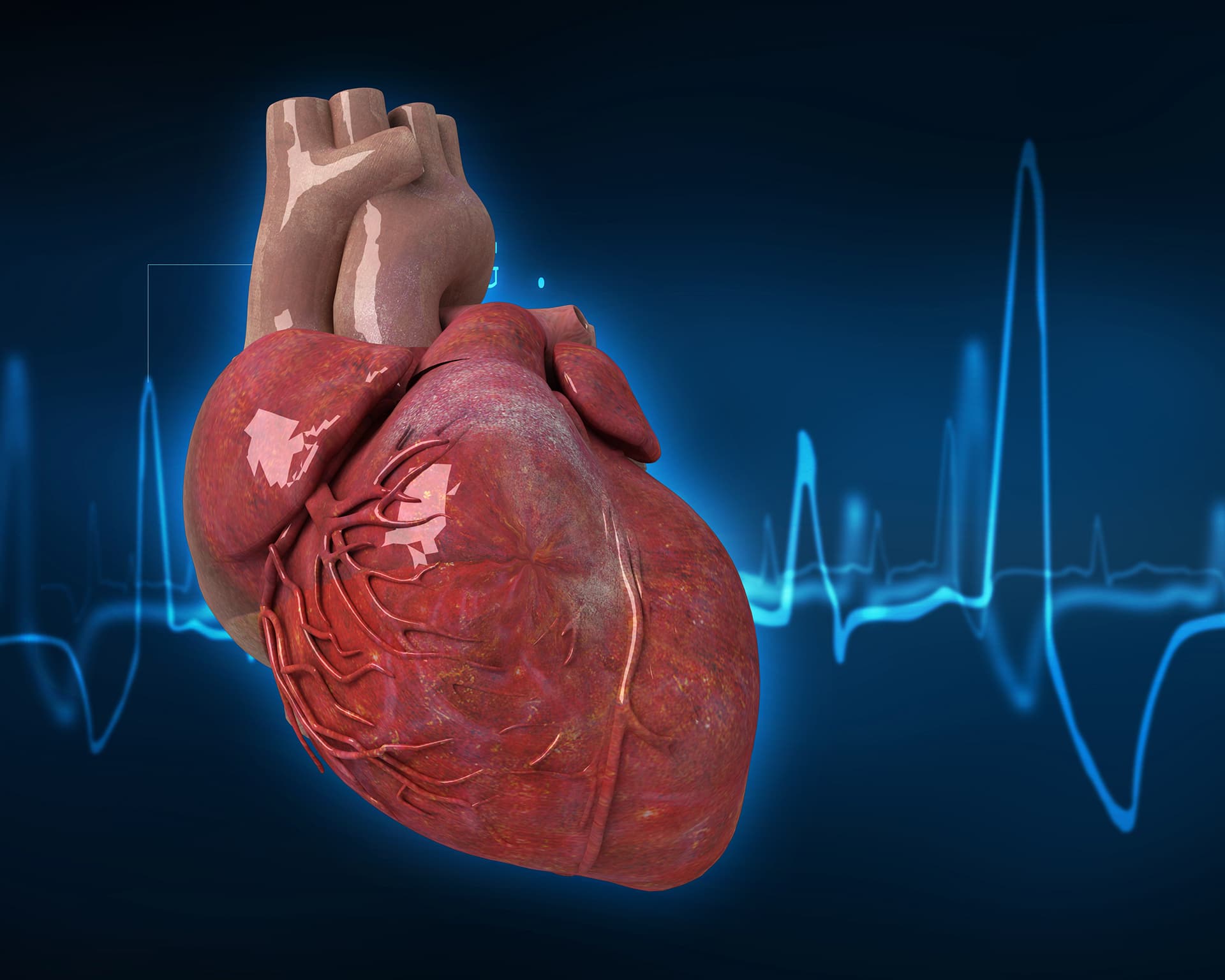




Traditional Belief to Overcome
To consider the potential effect of Endogenous Stem Cell Mobilization (ESCM) on the functions of the heart and the cardiovascular system, two traditional medical beliefs had to be overcome. First, traditional science had maintained for many decades that the ability of bone marrow stem cells to transform into other types of cells was limited to blood cells, they could not transform into cells of other tissues, and certainly not the heart. Because, and that’s the second belief, after birth the size of cardiomyocytes changes but the number remains constant during childhood and then decreases with age. In other words, the heart cannot regenerate and repair. Thus, on the basis of these two beliefs, increasing the number of circulating stem cells should have no effect on cardiac function.
Breakthrough Discovery – Stem cells can become heart cells
The first breach in this paradigm came from a study that documented how bone marrow stem cells injected into the scar of a damaged heart had the ability of transforming into heart muscle cells and improve cardiac function.[1] On the basis of this observation, a group of scientists at the NIH tried to alleviate the consequence of a heart attack by stimulating ESCM, and it worked.[2] Within four weeks, simply increasing the number of circulating stem cells led to significant renewal of the ventricular wall and almost normalized cardiac function.
In the years that followed, many teams duplicated these studies in both animals and humans, using the stem cell mobilizer G-CSF, concluding that ESCM could indeed significantly support cardiac repair.[3,4,5]
The only caveat was that in humans GCSF can only be used for a few days, as it can trigger platelet aggregation and therefore carries significant risks of strokes or embolisms. The solution may be the development of natural stem cell mobilizers that are milder but safe for long-term use. One such stem cell mobilizer has been documented to reverse cases of severe cardiomyopathy in a few months.[6,7]
A change of Paradigm – The heart can regenerate
While all these observations were undeniable and were definitely offering new therapeutic strategies and opening a new era in regenerative medicine, they were challenging a fundamental tenet of human health, the heart does not regenerate and therefore cannot effectively repair. So how can these observations be true?
A scientific team addressed this very question by devising an ingenious approach.[8] They harnessed an environmental phenomenon to reveal a core function of the human heart, and ultimately the whole body. In nature, radioactive carbon (14C) has been essentially absent from the atmosphere until the early 1950s, with the beginning of nuclear testing. Thereafter, 14C concentration in the atmosphere began to rise sharply and then dropped exponentially after the Limited Nuclear Test Ban Treaty of 1963, with atmospheric 14C levels being well documented over the years. Since atmospheric carbon is incorporated into the food chain through photosynthesis, the concentration of 14C in the food we eat reflects the concentration of 14C in the atmosphere.
Since carbon is incorporated in the DNA at the time of cellular division, the concentration of 14C incorporated into the DNA of a new cell reflects atmospheric 14C. Therefore, the concentration of 14C in the DNA can be used to retrospectively date the birth of any human cell. Isolating heart cells from people born after 1965 and who recently died, it was possible to look at the regenerative properties of the heart.
Traditional Vs Novel Understanding
This approach allowed this scientific team to test two opposing hypotheses. On one hand the traditional view that says that we are born with a somewhat pre-determined number of cells, we mature, and then beyond approximately 25 years of age we begin experiencing a slow decline in health associated with cellular loss. In this case, heart cells should all have been born within the first few years of life. On the other hand, the view supported by the emerging field of stem cell research that the body is in a contact process of cellular loss and tissue renewal, and the loss of health is associated not with cellular loss itself, but essentially with the loss of our ability to renew. In this case, new heart cells would be formed all throughout the course of an individual’s life.
The study revealed that new heart cells are constantly being formed during the life of an individual, and it takes roughly 25 years to renew about half the human heart. The same phenomenon was documented with other organs and tissues, using other methods, and estimated that about 3% of new insulin-producing pancreatic β cells are formed every few days [9,10] the liver renews at a rate of approximately 0.16% per day and the lung at 0.07% per day.[12] Therefore, in theory, we would have on average a new pancreas and a new liver every few years, new lung every 4 years, as well as significant renewal of the heart and brain over one’s lifetime.[13] These are just estimates, but they establish one crucial fact: the body is in a constant process of tissue renewal.
Conclusion – Releasing your own stem cells can help repair your hearth
In conclusion, contrary to traditional tenet, the cardiac muscle is an organ that can regenerate and repair, and increasing the number of circulating stem cells can be an effective way of assisting the heart in the process of tissue repair. While nothing can be done to help someone recover from a heart attack, the development of all this information brings new hope for people whose life has been affected by one of the top world’s killers.
What does cholesterol do?
At some point, we need to candidly look at this overall therapeutic strategy and reach the conclusion that the cholesterol-approach to cardiovascular disease is simply not working. It is undeniable that cholesterol plays a critical role in the etiology of vascular diseases, but it is not the cause, it is a mere participant. As extensively documented in numerous articles and scientific reviews, cholesterol does not simply accumulate in the arterial lining. The process initially begins with a microscopic lesion that slowly gets infiltrated with macrophages, which in turn accumulates oxidized cholesterol to become “foam cells”. As they form, these foam cells become inflammatory and wreak havoc in the local tissue, triggering the death of smooth muscle cells and disrupting the collagen matrix. The cumulation of all these phenomen leads to the formation of atherosclerotic plaques, increased blood pressure and ultimately, atherosclerosis.
Beyond the hearth, Vascular health – The failure of the cholesterol approach
Cardiovascular disease exceeds infection and cancer as the leading cause of death, so it definitely deserves some hearty attention in the field of health and wellness. When we think of vascular diseases, albeit simple high blood pressure, atherosclerosis, or a full-blown heart attack, we immediately think of cholesterol. In spite of all the science – or lack thereof- the development of a multitude of cholesterol-lowering drugs, and the intense focus on cholesterol by most Heart Associations in the world, it is hard to escape the fact that after nearly 4 decades of such focus, cardiovascular disease still remains the number one killer.
Check more Organ Systems in our interactive tool
The Real Culprit – Endogenous Repair of Microscopic Lesions
So again, in this whole process, cholesterol is but a passive participant; the cause of this whole cascade is a microscopic lesion that does not heal. In fact, quite unexpectedly, a whole new level of understanding about cardiovascular health has come from the field of stem cell research and can be summarized by the title of one article published nearly a decade ago:
Atherosclerosis as a disease of failed endogenous repair. [14]
Any time there is an injury in a tissue, whether a cut to the skin, a stroke, a heart attack, or a small lesion in the wall of an artery, the affected area releases compounds that call for stem cells to come to the rescue. As stem cells migrate into the affected area, they accomplish three distinct and very important tasks:
- 1) They calm down the inflammation generated by the injury,
- 2) They release growth factors that help to coordinate the process of tissue repair, and
- 3) They transform into cells of that tissue, actually participating to the repair process.
So, what leads to the development of vascular problems is not cholesterol, but the inadequate repair of small arterial lesions because of a decline in the the number of circulating stem cells, more specifically Endothelial Progenitor Cells (EPCs).
The Real Cause – A Decline in Endothelial Progenitor Cells (EPCs)
Endothelial Progenitor Cells directly participate in the repair process of the vascular wall.[15] Many studies have demonstrated that EPCs can facilitate the repair of injured arteries by replacing dysfunctional endothelial cells, thereby preventing the hardening of the arteries.[16] Vascular diseases are age-related problems, and incidentally, the number of circulating EPCs declines with age, especially in patients with arterial disease.[17] In fact, the number of circulating EPCs has been inversely linked to cardiovascular risks; in other words, the lower the number of circulating EPCs, the higher the risk.[18] People with the highest levels of EPCs have been considered to be the healthiest.[19]
The Number of EPCs as a Predictor of Cardiovascular Health
It has even been proposed that the number of circulating EPCs could serve as a predictive factor in vascular health.[20] One scientific team went as far as proposing a threshold under which cardiovascular risks were dramatically increased. According to these scientists, when the level of circulating EPCs goes below 0.0038% of the total monocyte population -a way of quantifying the relative number of stem cells-, there is a six-fold increase in the risk of cardiovascular disease.[21] Therefore, quantifying the number of circulating EPCs could serve as a promising biomarker for cardiovascular health.
A Healthy Approach – Increasing the number of EPCs
Contrary to cholesterol, these Endothelial Progenitor Cells are not passive indicators, they are responsible for repairing all types of blood vessels and constitute the very building blocks of cardiovascular health. They are more than simple biomarkers; they are responsible for endogenous repair. So, anything that can be done to increase the number of circulating EPCs will contribute to supporting overall cardiovascular health. Intense exercise can help, but the easiest is to use a new generation of dietary supplements referred to as “stem cell enhancers”, which have been documented to increase the number of circulating EPCs
Sources
[1] Autologous transplantation of bone marrow cells improves damaged heart function.
Tomita S, Li RK, Weisel RD, Mickle DA, Kim EJ, Sakai T, Jia ZQ. Circulation. 1999 Nov 9;100(19 Suppl):II247-56.
[2] Bone marrow cells regenerate infarcted myocardium.
Orlic D, Kajstura J, Chimenti S, Jakoniuk I, Anderson SM, Li B, Pickel J, McKay R, Nadal-Ginard B, Bodine DM, Leri A, Anversa P. Nature. 2001 Apr 5;410(6829):701-5.
[3] Granulocyte colony-stimulating factor and stem cell factor improve endogenous repair after myocardial infarction. Kanellakis P, Slater NJ, Du XJ, Bobik A, Curtis DJ. Cardiovasc Res. 2006 Apr 1;70(1):117-25.
[4] Prevention of left ventricular remodeling with granulocyte colony-stimulating factor after acute myocardial infarction: final 1-year results of the Front-Integrated Revascularization and Stem Cell Liberation in Evolving Acute Myocardial Infarction by Granulocyte Colony-Stimulating Factor (FIRSTLINE-AMI) Trial. Ince H, Petzsch M, Kleine HD, Eckard H, Rehders T, Burska D, Kische S, Freund M, Nienaber CA. Circulation. 2005 Aug 30;112(9 Suppl):I73-80.
[5] Autologous bone marrow stem cell mobilization induced by granulocyte colony-stimulating factor after subacute ST-segment elevation myocardial infarction undergoing late revascularization: final results from the G-CSF-STEMI (Granulocyte Colony-Stimulating Factor ST-Segment Elevation Myocardial Infarction) trial. Engelmann MG, Theiss HD, Hennig-Theiss C, Huber A, Wintersperger BJ, Werle-Ruedinger AE, Schoenberg SO, Steinbeck G, Franz WM. J Am Coll Cardiol. 2006 Oct 17;48(8):1712-21.
[6] The Therapeutic Potential of Stimulating Endogenous Stem Cell Mobilization. In: Tissue Regeneration – From Basic Biology to Clinical Application. Drapeau C, Eufemio G, Mazzoni P, Roth GD and Strandberg, S. InTech Open, 2012.
[7] Rapid and selective mobilization of specific stem cell types after consumption of a polyphenol-rich extract from sea buckthorn berries (Hippophae) in healthy human subjects.
Drapeau C, Benson KF, Jensen GS. Clin Interv Aging. 2019 Feb 4;14:253-263.
[8] Evidence for cardiomyocyte renewal in humans. Bergmann O, Bhardwaj RD, Bernard S, Zdunek S, Barnabé-Heider F, Walsh S, Zupicich J, Alkass K, Buchholz BA, Druid H, Jovinge S, Frisén J.
Science. 2009 Apr 3;324(5923):98-102.
[9] Dynamics of beta-cell mass in the growing rat pancreas. Estimation with a simple mathematical model. Finegood DT, Scaglia L, Bonner-Weir S. Diabetes. 1995 Mar;44(3):249-56.
[10] beta-cell turnover: its assessment and implications. Bonner-Weir S. Diabetes. 2001 Feb;50 Suppl 1:S20-4.
[11] Liver from bone marrow in humans. Theise ND, Nimmakayalu M, Gardner R, Illei PB, Morgan G, Teperman L, Henegariu O, Krause DS. Hepatology. 2000 Jul;32(1):11-6.
[12] Multi-organ, multi-lineage engraftment by a single bone marrow-derived stem cell.
Krause DS, Theise ND, Collector MI, Henegariu O, Hwang S, Gardner R, Neutzel S, Sharkis SJ.
Cell. 2001 May 4;105(3):369-77.
[13] Analysis of neurogenesis and programmed cell death reveals a self-renewing capacity in the adult rat brain. Biebl M, Cooper CM, Winkler J, Kuhn HG. Neurosci Lett. 2000 Sep 8;291(1):17-20.
[14] Atherosclerosis as a disease of failed endogenous repair.
Zenovich AG, Taylor DA. Front Biosci. 2008 May 1;13:3621-36.
[15] Are Endothelial Progenitor Cells the Real Solution for Cardiovascular Diseases? Focus on Controversies and Perspectives. Balistreri CR, Buffa S, Pisano C, Lio D, Ruvolo G, Mazzesi G. Biomed Res Int. 2015;2015:835934.
[16] Endothelial progenitor cells (EPCs) in ageing and age-related diseases: How currently available treatment modalities affect EPC biology, atherosclerosis, and cardiovascular outcomes.
Altabas V, Altabas K, Kirigin L. Mech Ageing Dev. 2016 Oct;159:49-62.
[17] Endothelial progenitor cells correlate with endothelial function in patients with coronary artery disease.
Werner N, Wassmann S, Ahlers P, Schiegl T, Kosiol S, Link A, Walenta K, Nickenig G.
Basic Res Cardiol. 2007 Nov;102(6):565-71.
[18] Circulating endothelial progenitor cells, vascular function, and cardiovascular risk.
Hill JM, Zalos G, Halcox JP, Schenke WH, Waclawiw MA, Quyyumi AA, Finkel T.
N Engl J Med. 2003 Feb 13;348(7):593-600.
[19] Circulating endothelial progenitor cells and cardiovascular outcomes.
Werner N, Kosiol S, Schiegl T, Ahlers P, Walenta K, Link A, Böhm M, Nickenig G.
N Engl J Med. 2005 Sep 8;353(10):999-1007.
[20] Endothelial progenitor cells participation in cardiovascular and kidney diseases: a systematic review.
Kiewisz J, Kaczmarek MM, Pawlowska A, Kmiec Z, Stompor T.
Acta Biochim Pol. 2016;63(3):475-82.
[21] Reduced number of circulating endothelial progenitor cells predicts future cardiovascular events: proof of concept for the clinical importance of endogenous vascular repair.
Schmidt-Lucke C, Rössig L, Fichtlscherer S, Vasa M, Britten M, Kämper U, Dimmeler S, Zeiher AM.
Circulation. 2005 Jun 7;111(22):2981-7.



